Recent Commercial Posts
Answering 3 Common Questions About Sewage Backups
5/4/2022 (Permalink)
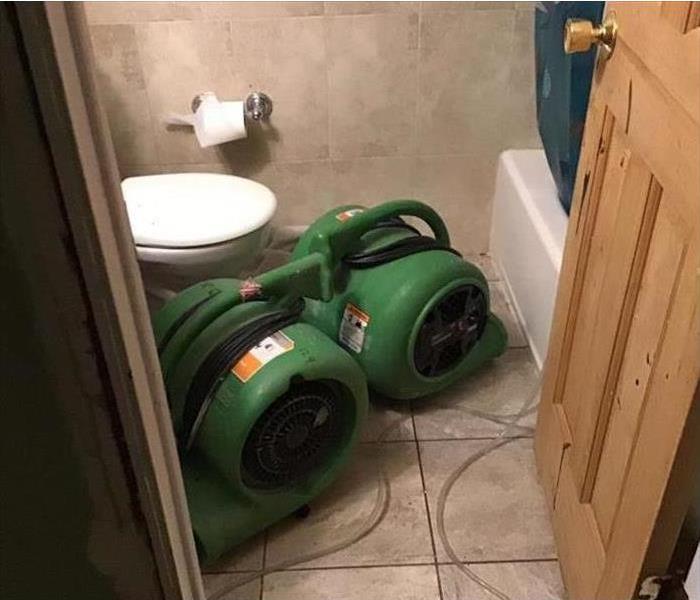 Water damage cleanup in Doylestown, PA.
Water damage cleanup in Doylestown, PA.
Three Common Questions About Sewage Backups
Storms do not just cause damage to the exterior of your Doylestown, PA, property. They can harm the interior of the building, as well. For instance, heavy rains can cause a sewer backup in the basement. Here are answers to some commonly asked questions about this emergency.
1. What Causes Sewage Backups During Storms?
During a big storm, rain water ends up in the local sewers. This can overwhelm the sewers. If they cannot handle all of the fluid, the water backs up into sewer lines and flows into buildings.
2. How Can You Prevent Sewage Backups?
While you cannot stop the next storm from hitting your area, you can reduce the chances of the storm flooding your building. Start by installing a check valve into each floor drain. This valve should block sewage from coming through the drains.
A sump pump is also a useful tool during storms. It can drain excess water from the premises before the flood gets too deep.
3. What Do You Do After Sewage Backups?
A sewer backup typically involves bacteria-filled black water. This water should only be handled by professionals. You should thus limit your time in the affected areas until the fluid recedes. In the meantime, call storm damage restoration experts who can safely remove the water.
If you do have to enter the basement, be sure to cover exposed skin and wear rubber boots. You should also turn off the circuit breaker to avoid electrocution.
Flood waters may additionally turn off pilot lights on any appliances you keep in the basement. This could lead to a gas leak in the building. If you do smell gas, leave the premises right away and call your utility company.
A sewer backup can contaminate your property after a storm. With the help of emergency restoration specialists, however, you can get your commercial building back to normal.
How To Keep Toilets From Overflowing
4/23/2022 (Permalink)
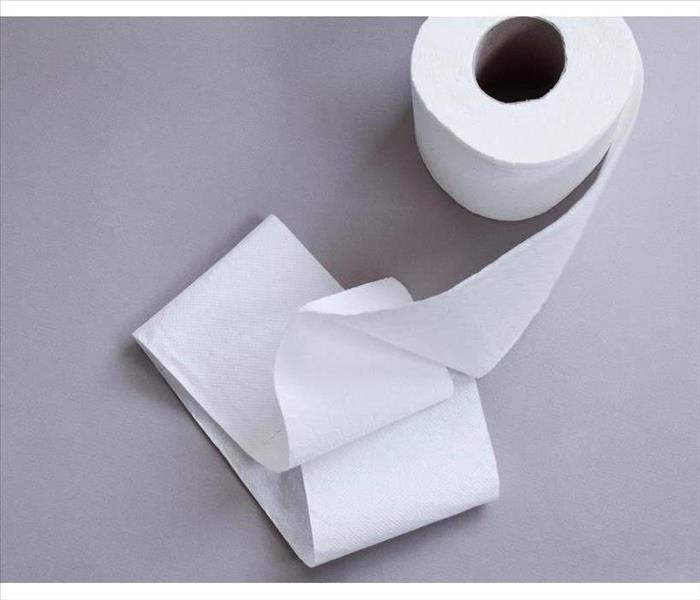 Use the right toilet paper.
Use the right toilet paper.
How to Prevent Toilet Overflowing
Every business has struggled with a clogged toilet at some point. The best way to prevent this from happening is to use these tips to keep your toilet from overflowing.
Use Signs and Plaques
Many people do not know what is flushable and what is not. Some things that claim to be flushable can wreak havoc on your plumbing. Nonflushable items include:
- Wipes and tissues
- Feminine products
- Napkins and paper towels
- Oils and plastics
All of these can and will cause toilet overflow and blockage problems. Having signs about what is flushable and what can't be flushed not only informs people but can help prevent them from putting odd items into your toilets.
Have Trashcans Available
The simple placement of trash receptacles in each stall and the bathroom's main portion can help prevent a clogged toilet. Remember, you also have to keep these receptacles clean so that they don't overflow and stop patrons from using them.
Correct Slow Drains Promptly
If you have a major overflow problem, you will have to involve a sewage remediation company in New Briton, PA to take care of it, but if your drains are just slow, you might be able to do it yourself. Use proper drain clearing techniques and consult a plumber if necessary. Correcting slow drains helps to stop major issues later on.
Use the Right Toilet Paper
Although it might not seem like it, the very thing that is supposed to be flushable might not be. To check if your toilet paper meets the requirements, you can use a bowl of water. Put a small amount of the tissue in the bowl and leave it for an hour or two. If it mostly dissolves, it's good. If it doesn't, you might want to consider changing brands.
A clogged toilet is a serious issue for any business. Although nothing can completely prevent it from happening, there are a few things that can help you mitigate your risk.
3 Ways To Prevent Mold at Your Business Property
4/12/2022 (Permalink)
 Water damage and high humidity levels can cause serious mold issues.
Water damage and high humidity levels can cause serious mold issues.
Prevent Mold at Your Business
Mold can do serious damage to your Buckingham, PA, business if it goes unchecked. Because most types of fungi tend to grow quickly in moist, humid environments, even the smallest instances of water damage could cause a considerable mold problem. Keeping a few preventative tips in mind can help you protect your business, employees and valued customers.
1. Monitor Humidity Levels
Mold growth tends to increase in humid areas, such as restrooms and in the employee kitchen. Mold does not require sunlight to grow or spread, so if mold happens to take hold here, it can grow unchecked until the odor it releases alerts you to the problem and by then, the growth could be quite large. Monitor and control humidity levels throughout your building and use ceiling or standing fans to prevent high humidity levels.
2. Do Not Delay Flood Repair
Water damage tends to occur most often during incidents of flooding, whether as the result of violent storms or something as simple as a water line break in the employee fridge. Despite the degree of damage, putting off repairs could lead to serious mold issues. If flooding is severe, you may want to call in a mold mitigation and removal service for assistance to ensure the job is completed correctly.
3. Store Documents Properly
One way to practice mold prevention is to store paper documents and records in a way that does not encourage fungi growth. Choose air-tight plastic containers with lids that snap down so moisture cannot affect the documents or hire a digitizing service to transfer paper records onto a cloud storage server. This can help you save space and reduce the risk of mold growth in your building’s basement or ground-floor storage room.
Water damage and high humidity levels can cause serious mold issues at your Buckingham, PA, business. Knowing how to prevent its encroachment may help you protect your business and avoid costly repairs that might come with ignoring the problem.
3 Tips for Avoiding Mold Growth in Your Restaurant's Kitchen
3/22/2022 (Permalink)
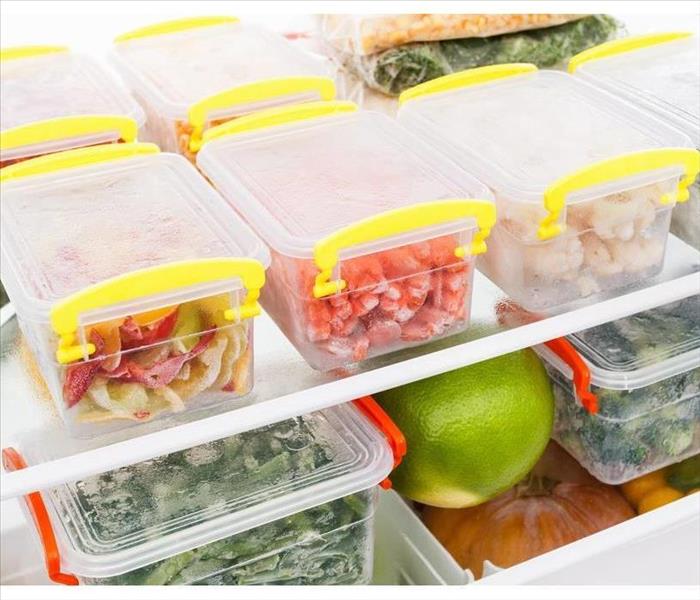 Protect your food from mold growth.
Protect your food from mold growth.
Tips To Avoid Mold In Your Restaurant Kitchen
Running a restaurant in Doylestown, PA, can be incredibly enjoyable, but there are some issues you might encounter. One to watch out for is mold growth in the kitchen, which is essential to avoid if you're selling food. If you're wondering how to prevent this, here are three tips for avoiding mold in your restaurant kitchen.
1. Watch Your Food
One of the main ways a restaurant can attract mold growth is through its food. If your food is damp and unprotected, it could begin to get fungal spores. This can eventually result in rotten supplies, so keeping a sharp eye on your ingredients is essential. If you do find fungus, throw out everything that has it. Although it may be tempting, don't save supplies by cutting away the moldy area. Here are some tips for keeping your food mold-free:
- Get fresh supplies regularly
- Keep storage areas clean
- Inspect items that were near the mold
- Focus on your fruits and vegetables
2. Avoid Humidity
Humidity is an almost sure creator of mold, so avoiding it is crucial. This is especially important if you live in a climate with high humidity or your store is outdoors. If you can get your levels between thirty and fifty percent indoors, you'll be fine. Otherwise, you might want to invest in some dehumidifiers.
3. Use Ventilation
Ventilation is crucial to reducing humidity. Essentially, it keeps humid air from remaining in place. It also prevents water damage from the accumulation of moisture. Therefore, you'll want to be sure that you have the right ventilation for your space. Even if you want to save money, don't get a small system if you have a large kitchen. Avoiding mold is worth the investment.
If you stay vigilant, you can protect yourself against major mold growth in your restaurant's kitchen. In the event that you find some, a mold remediation company can get rid of it.
What is Black Water, and Why Is it a Problem?
7/27/2021 (Permalink)
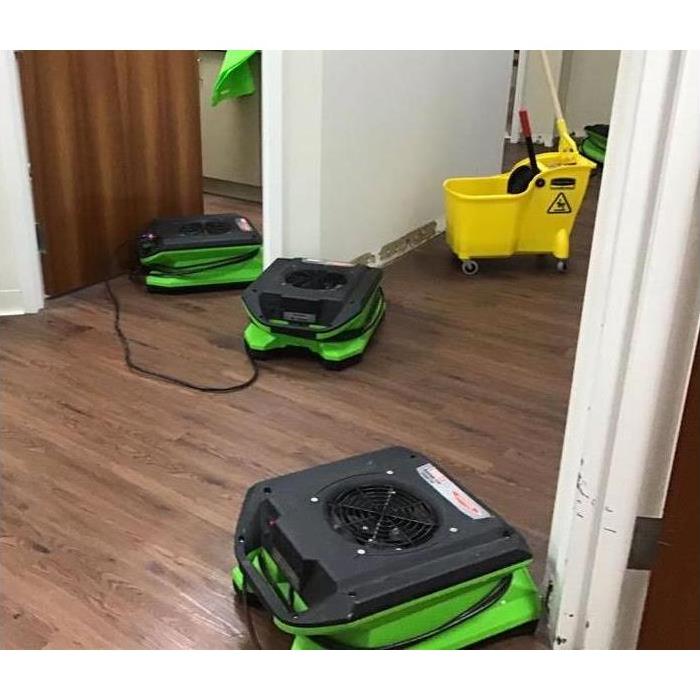 Storm damage cleanup services.
Storm damage cleanup services.
While areas of the world are more prone to flooding problems than others, water damage can occur in any home. You may not think too much about these issues, but if you understand the potential consequences of a flood, you would do everything in your power to protect your home and property. One of the biggest concerns you should have is sewage getting into your Chalfont, PA, home.
Black Water Facts
Black water is so named because it is flood water mixed with raw sewage. It is formed when sewage lines break or when excess water finds its way into sewers and then makes its way into homes or onto streets. This type of water can also come from overflowing toilets.
The Dangers
When water creeps into your home—whether it’s a small amount or a few feet deep—you should worry about water damage to your flooring, walls and possessions. But sewage in the water can be just as problematic. Because this type of water carries feces, urine and other harmful substances, it poses a major health risk to you and everyone in your home. If you come into contact with this water or ingest it, you could experience serious health effects.
What Can You Do?
The best way to prevent sewage from getting into your home is to call upon a specialist to examine your plumbing. A technician can ensure that your septic system and all the plumbing systems in your home are sound and intact. If this water still infiltrates your home, call a professional immediately to clean it up. Also, leave the affected area as soon as you can.
If your home experiences flooding, be on the lookout for water damage and for the potentially devastating black water. Follow these guidelines to identify this type of water and to protect yourself from it.
13 Surprising Facts About Mold
7/15/2021 (Permalink)
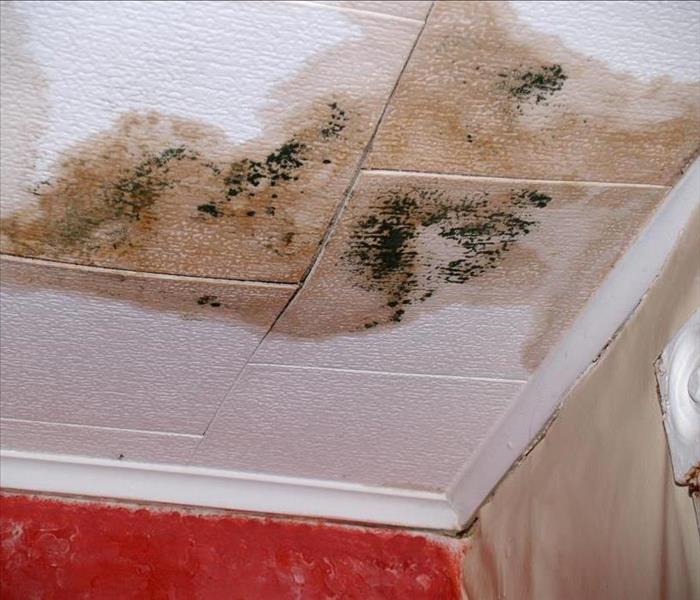 Mold can be a pesky and persistent problem in almost any commercial building in Doylestown, PA.
Mold can be a pesky and persistent problem in almost any commercial building in Doylestown, PA.
Have You Ever Wondered What Mold Is and Why It Exists?
The mold invading your property is part of the Fungi Kingdom and is related to mushrooms, yeasts, and the mold that develops on bread. Mold is a very efficient microorganism that our ecosystem uses to break down and clean up dying flora and fauna. Whether it is white mold or black mold, nature uses it to refresh the earth by removing dead organic matter. Here are some other surprising facts about mold.
1. Only a small amount of moisture is needed to bring mold spores to life.
2. Colonies of fungus can develop within 48 hours after water damage occurs.
3. Mold spores are almost always present in the air around you, even indoors.
4. Air movement as slight as a cough or sneeze can send mold’s microscopic spores into the air.
5. High humidity can encourage and support mold growth.
6. No matter how much mold cleanup you do, the colony will return unless the water source is removed.
7. There are over 100,000 varieties of mold.
8. Mold has an earthy and musty odor.
9. Mold eats organic materials, even inside your home.
10. Mold can look slimy, furry, powdery, or crumbly.
11. Molds from fungi have been used for hundreds of years to create cheese.
12. One of the first antibiotics was discovered by using mold.
13. There are many types of black mold, and most of them are harmless.
Mold can be a pesky and persistent problem in almost any commercial building in Doylestown, PA, and it is almost impossible for the layman to tell which type of mold is invading your property. One thing you can be certain of though when mold appears there is probably a moisture problem that must be dealt with. A mold removal and remediation team can stop the leak, remove the mold, and sanitize the area to prevent future black mold growth. Stop mold from eating its way through your building by fighting back today.
4 Important Pieces of a First Aid Set
6/22/2021 (Permalink)
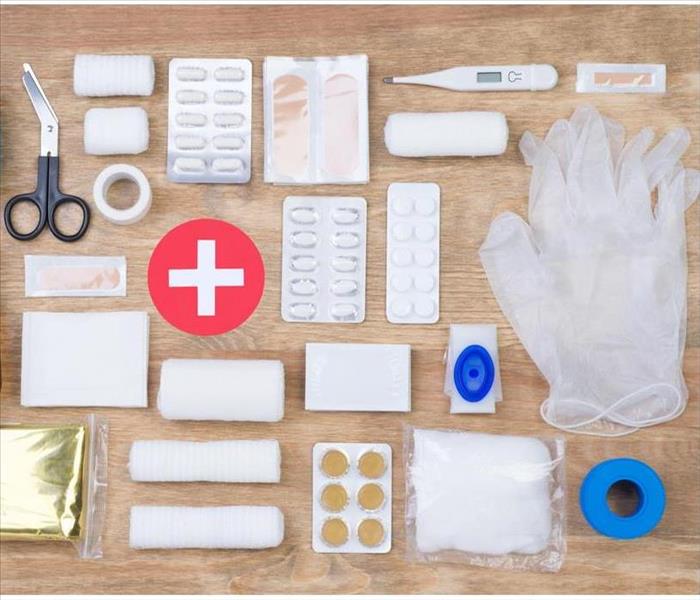 First aid kit supplies
First aid kit supplies
4 Important Pieces of a First Aid Set
As a building owner in Buckingham, PA, it is your responsibility to make sure the occupants of the space are prepared for emergencies. This can include having a commercial restoration team on speed dial to ensure your business can get back up and running after a flood or storm damage. It can also mean preparing an escape route for a fire. You should also create a first aid kit that stays on site.
Your emergency kit can contain a wide variety of products. According to the Occupational Safety and Health Administration, your set should include the following items to meet the minimum criteria.
1. Bandages
Your kit should be ready for basic first aid emergencies. You can stock it with various sized gauze pads, adhesive bandages, roller bandages, triangular bandages and wound cleaning solutions to ensure all minor cuts and scrapes can be properly taken care of right away. Including adhesive tape and scissors will help ensure anyone who uses the kit can get the bandages cut down to size and stuck in place.
2. Resuscitation Equipment
No first aid kit is complete without some sort of resuscitation equipment. This can include a pocket mask or resuscitation bag. This emergency equipment can help your employees clear a person's airway.
3. Safety Gear
You may want to include some personal protective gear, such as gloves, tweezers, splint, elastic wraps and blankets, in your set as well. This type of equipment ensures everyone can safely handle emergency situations.
4. Guide
Finally, you want to make sure to include a list of important phone numbers in your emergency kit. These directions for emergency assistance make sure your well-trained staff never forget who to call for each type of emergency. You could also include a map of evacuation routes as an added precaution.
Creating a well-rounded first aid kit can help improve the safety of your building. Once you have your kit stocked, make sure you check it regularly to replace missing or outdated items.
3 Common Types of Fire Damage
4/29/2021 (Permalink)
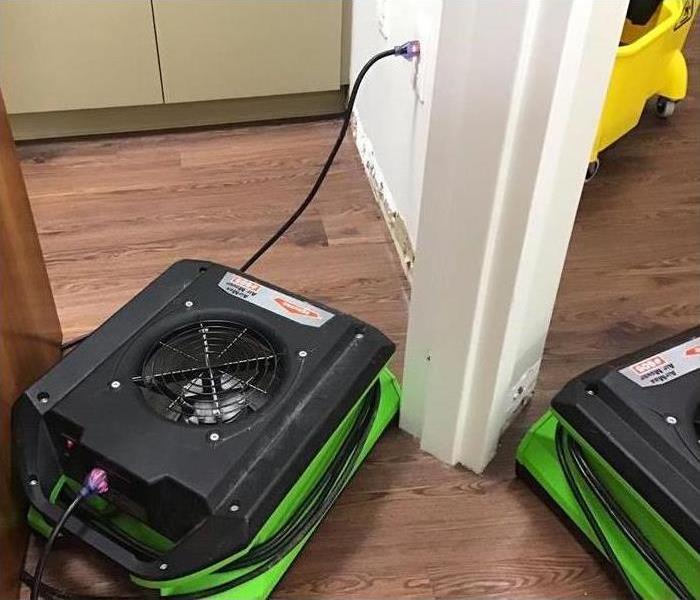 Fire and water damage in Doylestown, PA.
Fire and water damage in Doylestown, PA.
Three Types Of Damage Caused By Fires
One of the reasons that fires tend to be so destructive and expensive to recover from is that they usually cause multiple types of damage, requiring a variety of restoration services, such as water cleanup. These are three types of damage commonly caused by fires.
1. Smoke Damage
Almost all building fires generate a substantial amount of smoke, which can permeate structures and contents causing damage such as odors and stains. Smoke cleanup is often required to completely remove lingering smells and prevent additional damage. When smoke isn't completely removed, odors can persist for months or even years after a fire. Additionally, smoke residue can act as a corrosive agent, causing structures to deteriorate over time.
2. Water Damage
Water is an essential component of any attempt to put out a commercial fire. Most commercial buildings employ sprinkler systems, which can greatly reduce the spread of fires, but also cause substantial water damage to the building and contents. In addition to repairing the affected property, it is important to quickly employ water cleanup services to dry out the property. Otherwise, the excess moisture can cause additional damage and lead to other problems such as mold growth.
3. Fire Damage
The most obvious type of damage is the damage caused by the flames themselves. Fire can rapidly destroy the structural integrity of a building and cause severe damage to any property or inventory stored inside. The debris left behind often requires extensive fire cleanup. In some industrial settings, fires may cause explosions or the release of hazardous chemicals, making it important to immediately contact emergency services in Doylestown, PA.
Businesses need to be prepared to deal with more than just damage from flames when making fire preparation plans. Smoke and water cleanup may also be needed to fully restore the property to preloss condition and prevent additional damage from occurring to the property.
4 Things You Should Do After a Fire in Your Commercial Building
4/17/2021 (Permalink)
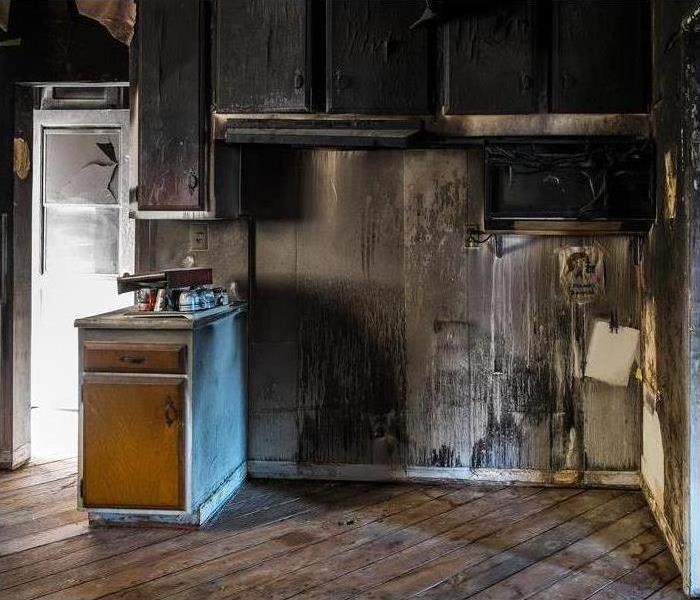 After an emergency, fire restoration should be done quickly.
After an emergency, fire restoration should be done quickly.
The Following Are Some Things You Should Do After A Fire
It can be easy to panic when a fire occurs in your Doylestown, PA, building, but you should try to stay as calm as possible in this situation. Doing so will allow you to think more clearly and take the necessary steps toward fire restoration once the emergency has passed.
1. Stay Out of the Building
Because a fire can affect the structure of the building, it may not be safe for you to go inside right away. Some areas may have been weakened and could possibly collapse. For this reason, you should stay outside until you are told otherwise. An inspection will need to be done first.
2. File an Insurance Claim
Particularly if there is a large amount of damage, but even if the affected area is small, you will need to start a fire insurance claim as soon as possible. Cleanup and repairs can be costly, and you don’t want to have to pay for these out of pocket.
3. Contact a Restoration Service
When a fire occurs, the flames are not the only thing that can cause damage to your building. Soot and smoke cleaning will need to be done because these elements can travel through the air and may affect a large area even if the fire was contained. If a hose was used, you will be dealing with water damage as well.
4. Document the Damage
It is important to document your loss and make a list of affected items. This information can be used by your insurance adjuster to help determine the amount of your claim. A fire damage remediation company can help with this task before they begin work on mitigation and fire restoration.
After an emergency, fire restoration should be done quickly. This process will include cleaning, rebuilding and odor removal to return your building to its previous condition. The sooner it is completed, the sooner you can return to business as usual.
The Importance of Backup Power
4/17/2021 (Permalink)
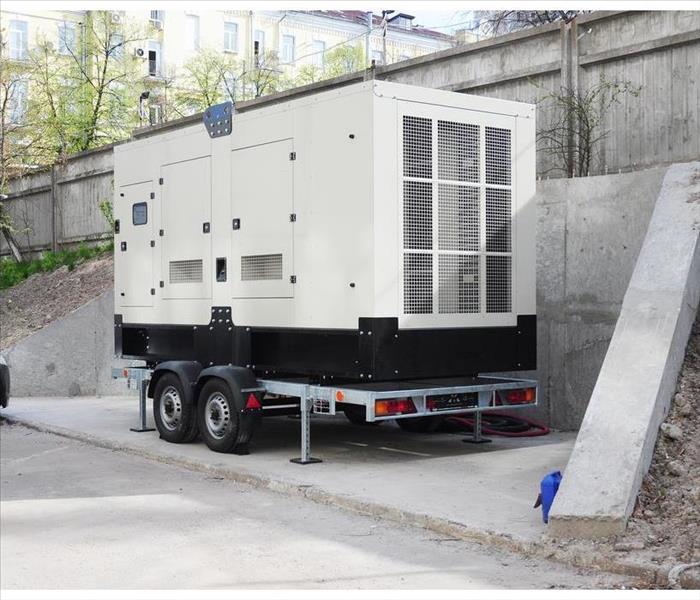 It's a good idea to have backup power for your business.
It's a good idea to have backup power for your business.
It's a good idea to have backup power for your business in Doylestown, PA. You never know when a big storm or a power outage will affect your company. One smart step to take is buying a commercial generator that is big enough and powerful enough to run either all of your company or at least keep critical systems going. The initial cost for this equipment can be significant, especially if you buy a large one or one that kicks on automatically when the lights go out. Your electrical system may need to be altered or upgraded to accommodate the new equipment.
When Is a Commercial Generator Needed
Numerous reasons exist that can knock the power out in your building. Here are just a few of the situations that can result in a disruption to your power grid:
- A major storm
- A substantial flooding event or plumbing issue
- An accident that takes down the power supply
- An earthquake
- A municipal blackout
- A power overload in your building
Many of these situations may be brief and will be taken care of through time or by a visit from an electrician. Others, though, such as a powerful storm or flooding, may last longer. By having a strong backup plan, your business can still serve customers and keep the lights on.
How Can a Generator Be Maintained?
To avoid generator problems, you should keep a few things in mind. Proper maintenance will extend its lifespan, which can be as long as 5,000 hours of use, and make sure it will work when needed. Only use the device as indicated in the owner's manual. Make sure all guidelines for ventilation are followed.
Being prepared is all part of being a successful business owner. You never know when a disaster will strike. Therefore, look for a company that is Faster to Any Size Disaster to help you with storm damage recovery and cleanup.
How To Prevent Mold Damage in Your Commercial Building
1/26/2021 (Permalink)
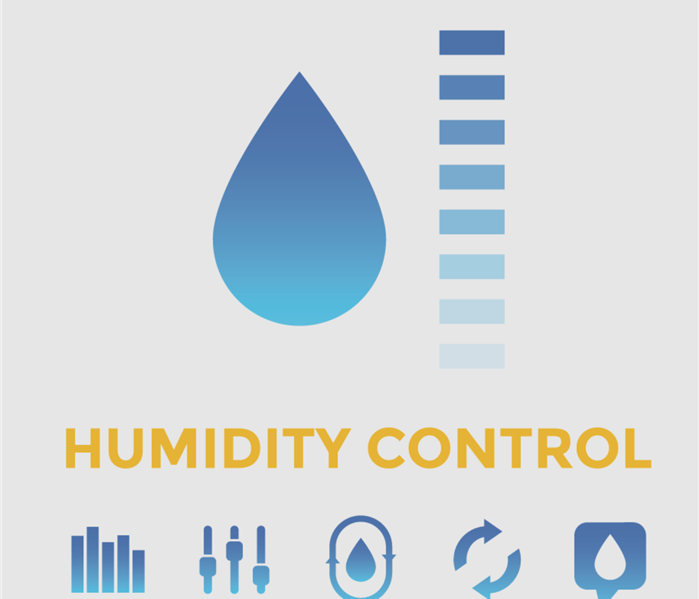 The humidity level inside your building should be no more than 60 percent
The humidity level inside your building should be no more than 60 percent
Mold Prevention Tips
Whether you own a large commercial building or a small store, you do not want mold to spread unabated throughout your Buckingham, PA, property. Mold growth can occur anywhere, including
- Above ceiling tiles
- Inside walls
- Around pipes
If an infestation occurs, you may have to temporarily close your building while experts perform mold cleanup and remediation. This shutdown could cost you a lot of money. Luckily, there are some simple ways to avoid extensive mold problems. Since the fungus thrives in wet areas, most mold prevention tips involve limiting water damage.
Addressing Water Issues
Start by surveying your property for signs of leaks. Plug those leaks immediately before they cause further harm.
You may also want to waterproof parts of your property. This could be expensive, but a mold infestation would be even more costly.
Pay special attention to sections of your building that are prone to flooding. If a flood does occur, have the water removed within a day or two.
Reducing Moisture
Mold does not only spread following major water damage. Even everyday moisture can encourage the growth of this harmful fungus. If your property uses stoves or dryers that create moisture, make sure those appliances are vented properly. You may also want to run an exhaust fan or open a window when these items are in use.
Indoor humidity is another common cause of mold growth. The humidity level inside your building should be no more than 60 percent. Use a moisture meter to monitor the humidity within the property.
Condensation is often a sign of excess humidity. Any drops of moisture on pipes or windows should thus be dried immediately.
To prevent mold in your building, you should reduce the excess moisture throughout your property. You should also clean up any water damage immediately. While the above tips will not completely eradicate the mold inside your building, they should prevent the fungus from becoming a major issue.
3 Ways to Combat Smoke Damage to Your Commercial Building
1/12/2021 (Permalink)
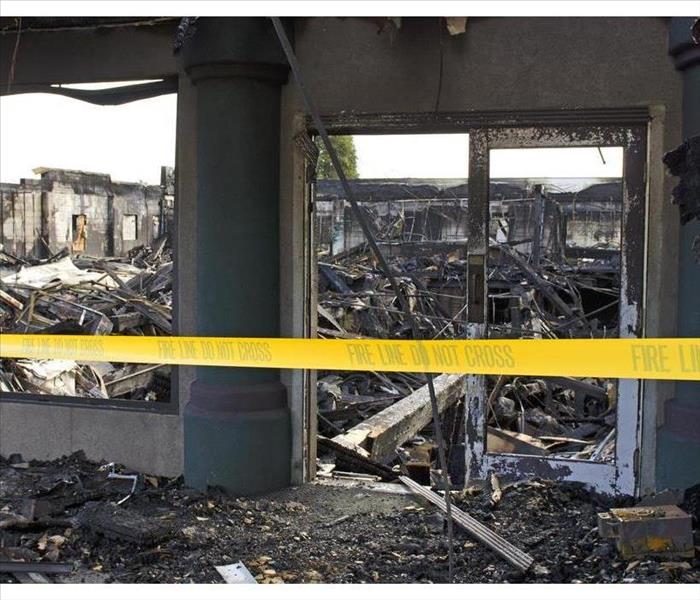 Commercial fire damage in Buckingham, PA
Commercial fire damage in Buckingham, PA
3 Ways to Combat Smoke Damage to Your Commercial Building
Has your commercial building in Buckingham, PA, suffered from a fire? Fire damage is a serious issue by itself, but smoke damage usually accompanies it. This is a problem that must be addressed.
1. Be Informed
We've all seen it on TV: The smoke that billows out of buildings as a fire burns. As a fire rages, it causes the build-up of large amounts of smoke. This is an issue for a number of reasons, and many business owners don't understand the importance of smoke cleaning after a fire. Know that smoke alone can cause fabrics, walls, wallpapers, and even electronics to degrade over time. The properties of smoke allow it to act as an acid of sorts that degrades most materials.
2. Contact Your Insurance
This one's a no-brainer after a fire, but it's best to be informed about what portion of smoke damages your insurance will cover. It's also important to know if they cover any type of restoration service or smoke cleaning.
3. Call a Professional
To get your business back to working order, you must get in touch with a professional fire damage and restoration service. These experts restore homes and businesses back to their former state in a matter of a few days. They even come specially equipped with tools such as powerful vacuums to clear the smoke odor from upholstery and furniture. Most specialists arrive with sensitive odor-detecting tools to ensure that they get to the source of the smells. This way, you can be sure that the odor is gone for good. The last thing anyone wants is for their building to smell faintly of smoke for years to come, especially if you plan on keeping any furniture from the fire.
Smoke cleaning is an important step, and with some information under your belt and a professional by your side, your building is back to normal within a few days.
4 Steps to Take When Your Pipes Burst
12/14/2020 (Permalink)
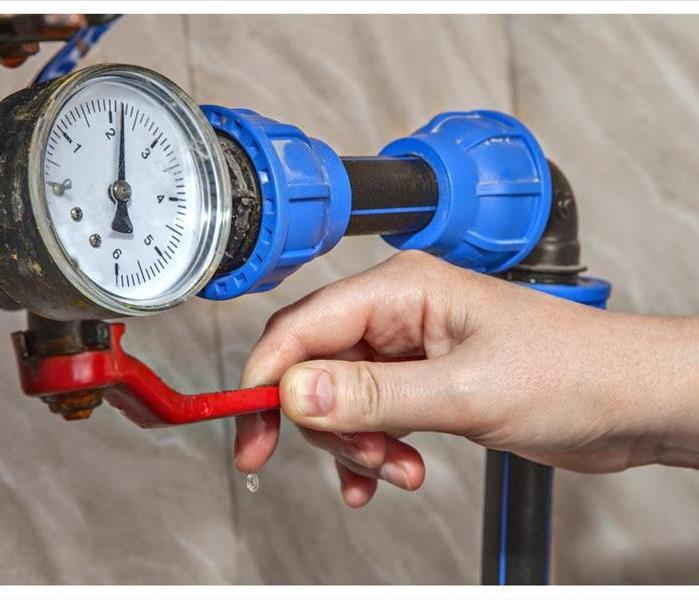 Find the main valve and turn it off
Find the main valve and turn it off
4 Steps to Take When Your Pipes Burst
If your business in Doylestown, PA, is located in a cold-weather region, you probably know that extreme temperatures in winter can lead to water damage, especially from frozen, bursting pipes. However, pipes can also burst in warm weather due to clogs, corrosion or even from tree roots growing through the pipe walls. Discovering you have water spraying or flooding everywhere can wreak havoc with your nerves, but don't panic - here's what to do:
1. Shut Off the Water
Find the main valve and turn it off. When water freezes, it expands and creates pressure that can weaken and crack the pipes, and there may be multiple areas affected. Once you have it shut off, it’s a good idea to turn off the electricity as well, so you don’t have an even bigger problem on your hands.
2. Call a Plumber
You will need someone to replace or fix the broken pipe before you can turn the water back on again. Unless you have expertise handling these kinds of emergencies, it’s best to call in a professional who deals with bursting pipes all the time. He or she can properly assess the cracks and recommend how to proceed so you can avoid further damage to your property.
3. Contact a Water Remediation Service
If you have any significant flooding, you’ll need help from the experts. Remediation is the process of extracting the water, cleaning, sanitizing and thoroughly drying the area, as well as repairing any structural damage.
4. Call Your Insurance Company
Unless your flood occurred as a result of neglect, your insurance should cover the expense of repairs and cleaning, along with any loss of equipment or supplies. Your agent will lead you through the process of filing a claim and be able to answer any questions you might have.
Bursting pipes can’t always be avoided, but if you’ve suffered commercial water damage, there are many resources to help you get back in business as soon as possible.
What To Do After a Pipe Breaks
11/4/2020 (Permalink)
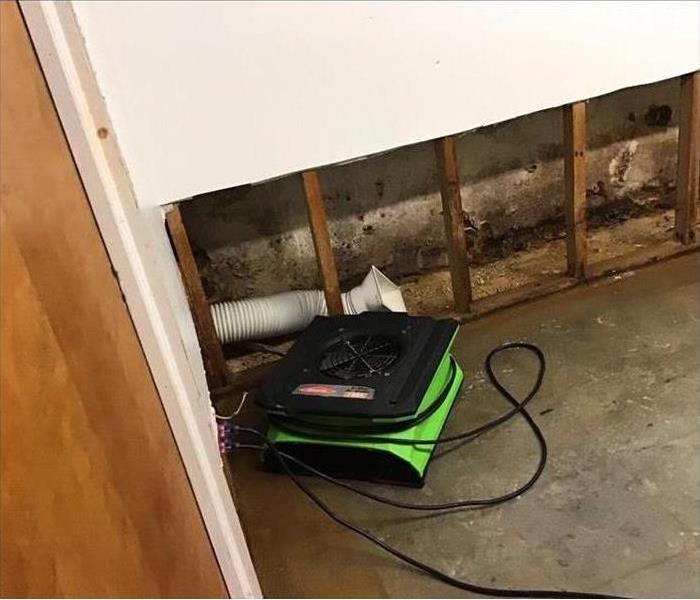 Commercial water damage in Doylestown, PA
Commercial water damage in Doylestown, PA
Consider The Following Steps To Lessen The Damages
Pipes that freeze due to inadequate insulation or poor placement frequently burst and cause havoc. Thankfully, most insurance companies do cover damages caused by bursting pipes. Check with your insurance to see if your business in Doylestown, PA, is covered. If you do ever suffer a burst pipe, there are steps to take to help lessen the damages.
1. Shut Off Water and Electricity
Whenever you encounter any type of catastrophic leak or flooding, shut off the water supply as soon as possible to stop the flow of water. Knowing where your water shut off valve is ahead of time is a good idea. It's not something you want to frantically hunt for in the midst of a flood. You should also shut off the electricity in any part of the building where flooding has occurred.
2. Call a Plumber
Once you've cut off the water and electricity, immediately call a plumber. Bursting pipes due to cold weather are common, and plumbers are often inundated with calls during winter storms. Do not delay in contacting a plumber. Plumbers are specially trained and equipped to safely and reliably fix broken pipes. Plan ahead and research plumbers, electricians, and other tradesmen available in your area who can help in an emergency before you actually need them.
3. Start Cleanup
After a plumber has been contacted and scheduled, begin removing the excess water. Use mops, buckets, towels, and anything you have available to dry the area. Repairing water damage can become costly and complicated. If water is not removed quickly, mold and mildew become a threat. An expedient cleanup aided by a restoration specialist after water damage helps to lessen the occurrence of mold growth and keeps total damages low.
Bursting pipes are caused when water freezes and expands. Weak pipes that are poorly insulated are most susceptible to this problem. Pay attention to your water flow in colder months and act quickly if you suspect that your pipes might be frozen.
Keeping Up With Your Plumbing Needs
4/22/2020 (Permalink)
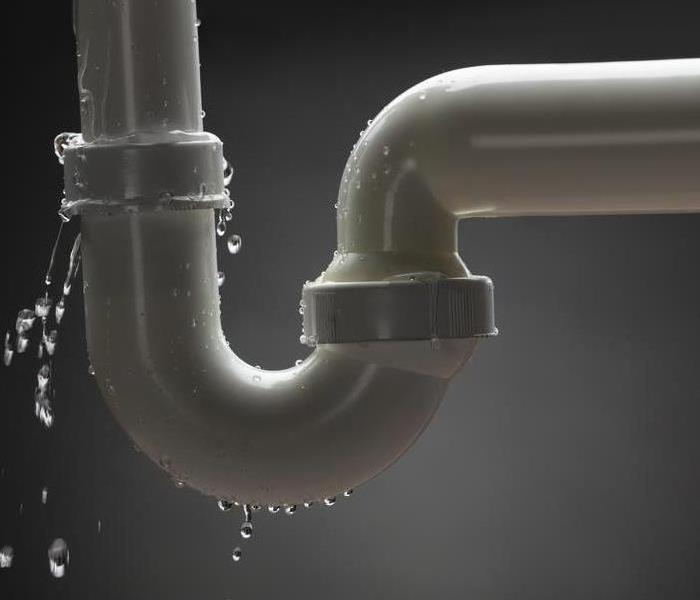 Take the proactive approach, locating trouble, and mending it as soon as possible.
Take the proactive approach, locating trouble, and mending it as soon as possible.
Like many things in life, nothing is full proof. You cannot block everything from happening. As a business owner in Doylestown, PA, you want to prevent your plumbing problems, avoiding major headaches, closures, and large claims. It's impossible to guarantee safety; however, you can make the choice to become actively aware of potential complications, reducing the probability of a major catastrophe.
1. Pay Attention to Your Monthly Statements
Find a leak before it becomes a broken pipe by monitoring how much you're spending on your company's utilities. Look at your bill, noting whether you're seeing an increase. It's best to observe changes in water usage over several months. If it's creeping up without a reasonable explanation, you may have water dripping somewhere. See a leak detection service to find your problem.
2. Be Cognizant of Your System's Condition
Often plumbing problems develop over time, starting off small. In the craziness of the day, it's easy to chalk something up to nothing, moving on to what you think is more important work. Don't brush off these minor observations. As you go about your day, note how your faucets and toilet are functioning. Are you noticing high levels of condensation? Do clogs happen quite frequently? Is something starting to rust? Anything out of the ordinary should be evaluated early on, hopefully, preventing a major break or repair.
3. Have an Experienced Plumber Look Over Your Pipes
Have a trusted, knowledgeable, plumber look over everything at least once a year. You may not think that paying a specialist to monitor is wise; however, you'll appreciate saving time down the road. After all, if a water main line busts, you'll need to call out a water restoration company to not only fix the piping but also to tend to the structural weaknesses. All of that could require shutting down the business. The team will get your place back up and running, yet this could be prevented with an early inspection.
Don't let plumbing problems exacerbate. Instead, take the proactive approach, locating trouble, and mending it as soon as possible.
Basic Services Offered by a Commercial Fire Restoration Company
4/19/2020 (Permalink)
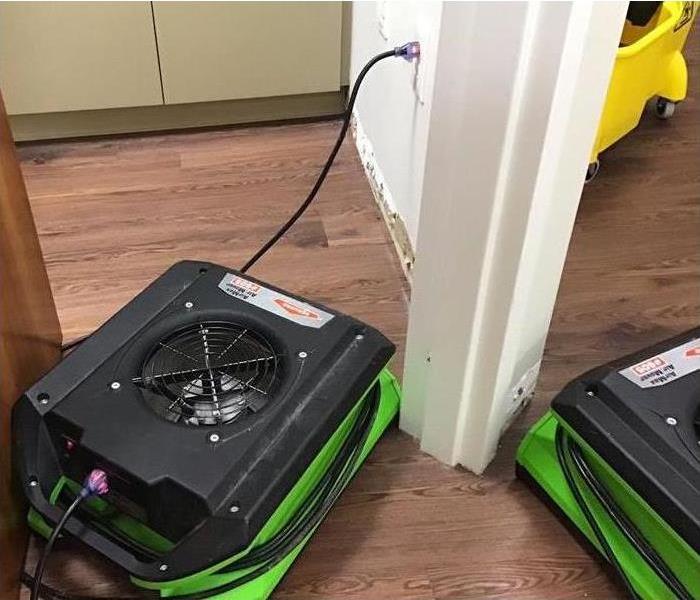 Cleaning after a fire in Buckingham, PA
Cleaning after a fire in Buckingham, PA
Make Sure The Technicians Provide The Following Services
When you contact professional fire damage restoration for your business in Buckingham, PA, you should expect some basic services as part of the process. Restoration involves several steps, some of which are crucial for a successful job. As you find the best company to handle the results of commercial fire, make sure the technicians provide the following services.
Damage Assessment
After a fast response to your call, the company's experienced workers will perform a fire damage assessment once it is safe to enter the building. This process allows them to investigate the exact damage done to the building and property, the extent of leftover smoke and soot and the impact on the location. By assessing the property, they can create a detailed, specialized remediation plan, as well as a project estimate.
Cleaning and Removal
After you see and approve of the assessment and estimate, fire damage restoration formally begins. Once the employees use tarps and boards to prevent future problems, they will clean the area and remove pollutants and leftover waste.
- Soot, dust and smoke cleanup
- Odor removal
- Water damage cleanup and drying
- Damaged object removal
- Intact object cleanup
The damage left behind endangers your property and the safety of your staff and clients. The remediation professionals ensure these contaminants are gone and everything is cleaned or replaced before reaching the repair and renovation stages.
Repair and Renovation
You will need to collaborate with the technicians to repair and replace walls, flooring, and other furniture and equipment. Whether each item is either fixed or changed depends on how much damage there is and whether it can be salvaged. Many providers also offer renovation. There might be improvements or additions you always wanted to make, so take the opportunity to inject new life into your establishment.
The process behind fire damage restoration is long and consists of multiple procedures. Always check that the people you hire offer them to guarantee a high-quality project.
How To Be Ready for Disaster in the Workplace
3/30/2020 (Permalink)
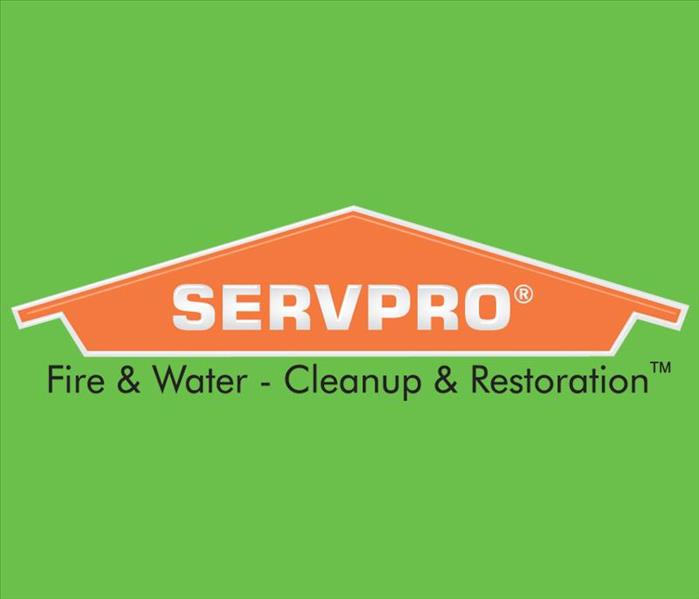 Follow these tips to guide you so you and your employees can be safe in the face of danger.
Follow these tips to guide you so you and your employees can be safe in the face of danger.
If you're a business leader, you have many responsibilities. You want to build a profitable company and take good care of your loyal customers, but you also should create a safe, comfortable environment for your staff. You also have supplies and materials to worry about. Emergencies in the workplace can threaten this security. It's no wonder why so many leaders stress disaster preparedness. If you're not ready for an emergency, now is the time to start.
Possible Events to Prepare For
You probably won't ever endure a disaster in your office. That does not mean challenging incidents can't arise. You may not be able to predict emergencies from occurring, but you can be aware of the possibilities, such as these:
Fires
Severe storms such as hurricanes, tornadoes or thunderstorms
Earthquakes
Water damage from a sewer backup or a broken pipe
Have a Continuity Plan
For effective business preparedness, you need to be ready to carry on your operations even if you can't be in the building. Make sure as many employees as possible could work remotely if necessary. Establish effective forms of communications and project management through software and online resources. Or, you could have an agreement with another office in Buckingham, PA, where you could temporarily relocate and share space.
Back up Your Data
A professional disaster cleanup team has the skills and equipment to salvage many items in your office and restore damaged materials. To be safe, however, you should back up important files and data on off-site servers and online storage drives.
Know How To Evacuate
One of the most important aspects of disaster preparedness is to develop an exit plan. Whether you're facing a flood, earthquake, fire or other emergencies, develop an effective way to safely get out of the building. Make sure everyone knows his or her role. Practice this plan at least once a year.
It may be too late to start disaster preparedness if you wait any longer. Follow these tips to guide you so you and your employees can be safe in the face of danger.
What Property Damage Is Tax Deductible?
3/4/2020 (Permalink)
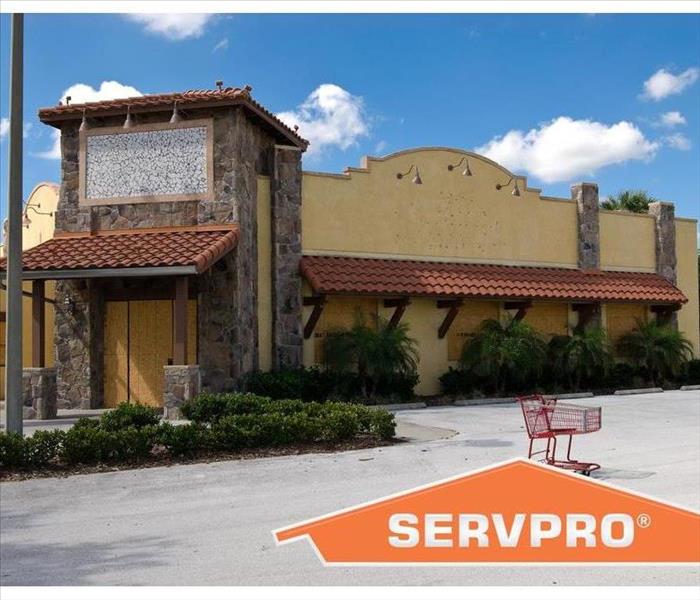 As a business owner, you should be prepared for all situations
As a business owner, you should be prepared for all situations
If you have sustained storm damage following a tornado, hurricane, or other severe weather event, you may qualify for tax deductions that can help you offset losses that aren’t covered by your insurance policy. Some insurance policies don’t cover all forms of property damage, such as losses due to floods. Other insurance policies may have a cap on the benefits they provide, which can leave you on the hook for the rest of the costs. In this situation, tax deductions can help you offset some of the costs of repairs.
Covering Losses From Natural Disasters
Some forms of property damage may be tax deductible. A few of the most prominent examples include:
- Earthquakes
- Floods
- Blizzards
- Tornadoes
- Hurricanes
- Wildfires
In contrast, losses that develop due to accidents and deterioration in Buckingham, PA, are not eligible for a deduction.
In addition, if your property is covered by an insurance policy, you cannot claim a tax deduction, even if you do not file a claim. Therefore, if your insurance company covers the cost of repairs, you should take the reimbursement allowed under your policy. Do not forgo this reimbursement in favor of the tax deduction. This is not allowed.
Claiming Deductions for Property Damage
If your insurance policy does not cover your property damage, you may be able to claim a tax deduction. This damage needs to be itemized. Additionally, the rules for claiming commercial storm damage are different from residential damage. In general, the guidelines are more lenient for commercial property destruction. For starters, there is no limit to what you can claim for commercial damage. Some of the most common deductions include the cost of commercial building restoration services, mold remediation, and water damage repair.
Planning Appropriately for Storms
As a business owner, you should be prepared for all situations. The first step may be creating a plan for how to deal with property damage in Buckingham, PA, that isn’t covered by your insurance policy.
How Is an Estimate Developed Following Fire Damage?
2/18/2020 (Permalink)
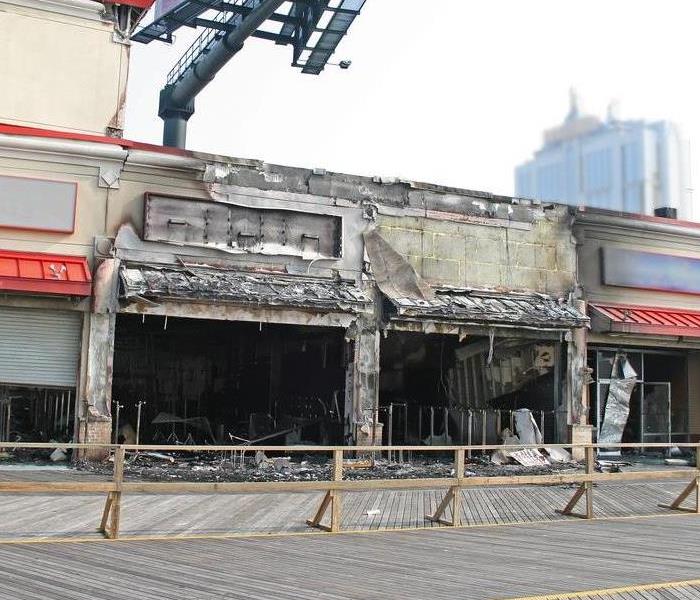 When it's time to get an estimate for fire damage cleanup costs, remember there are many factors involved.
When it's time to get an estimate for fire damage cleanup costs, remember there are many factors involved.
The cost of rebuilding and full recovery is one of your main concerns after a fire burns through your commercial property. After the emergency personnel leave and before Doylestown, PA, fire damage cleanup professionals arrive, you should have some idea of what to expect as an estimate is developed:
Several Factors Are Considered
The estimate you receive covers much more than cleaning up and new construction. The figure should also include the costs related to
Board up and security services such as tarping and temporary fencing
Live security guard on-site, if necessary
Content storage and removal of debris
Risks associated with hazardous chemicals or substances you have on-site
Depending on your business practices, there may be other elements to consider.
Several Professionals May Be Involved
Representatives from the fire department may visit the site of the commercial fire from time to time to make sure there aren't any new flareups. An inspector from your insurance company may also want to assess damages. If you've hired a third-party to assess damages, representatives from that firm will need to walk through your property. Of course, technicians from the fire and smoke damage cleanup company will also complete a thorough evaluation.
Lowball Quotes May Be Given
It isn't uncommon for some companies to give you a really low quote. When this happens, move on to a different contractor. Those low compilations of costs are just the beginning, and you're likely to be charged with several additional costs as the work progresses. This is a common occurrence when the contractor you hire subcontracts portions of the work.
Services May Be Covered by Your Insurance
In fact, some insurance companies prefer that you work with professional cleanup and restoration contractors. Contact your insurance agent to find out if there's a preferred company to contact for fire and water damage repairs.
When it's time to get an estimate for fire damage cleanup costs, remember there are many factors involved, several professionals may show up, avoid contractors with lowball quotes, and check with your insurance company. Be confident that you're getting great services by understanding how the estimation process works.
3 Tips for Troubleshooting a Slow Drain
1/25/2020 (Permalink)
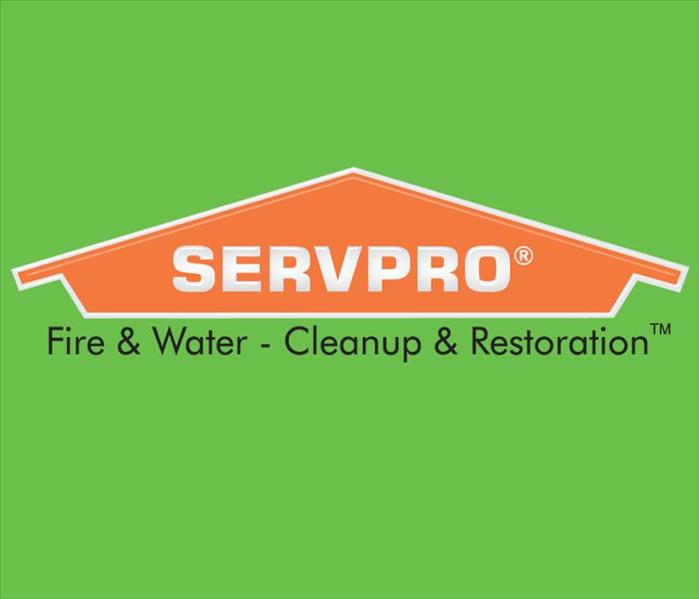 Most of the time, a clogged drain can be a simple repair you can do yourself.
Most of the time, a clogged drain can be a simple repair you can do yourself.
A clogged drain can be an inconvenience, particularly if it is in a busy area such as a public restroom or the break room. If left unchecked, it can develop into a larger problem that ultimately requires sewage cleanup experts to remedy. Here are three ways you can troubleshoot a slow drain.
1. Clean Drain Stopper
If it seems like a little water is getting through, you may be able to fix the problem by just cleaning the gunk out around the drain stopper. The stopper is the first line of defense against a clog, as it blocks larger debris from getting down the drain. Regularly cleaning helps you clear out the smaller particles that build up and keep water from getting down the pipes. In addition to the stopper, you may consider a strainer for drains in areas where items other than soap and water are likely to enter the sink, such as the kitchen or break room. This can prevent clogs as well.
2. Use a Plunger
When cleaning the stopper doesn't work, the clogged drain may need a little extra help. A plunger forces air through the pipe, pushing out tougher clogs so that water can drain more freely. Keep any area in your building in Doylestown, PA, that has a sink stocked with a plunger so that you can access it easily when you need it.
3. Pour Unclogging Agents
Depending on the nature of the clog, there may be cleaners that can help you unclog a slow drain. If you suspect the clog is a buildup of grease, hot water, and a little dish detergent may do the trick. If the clog is more likely to be skin cells or hair, or if you are uncertain about what is causing the clog, try using an industrial drain cleaner. If this doesn't solve the problem, you may need a plumber to assess and take care of the issue.
Most of the time, a clogged drain can be a simple repair you can do yourself. For more serious problems, you are better off calling a professional to help.
How To Remove Mold From Air Conditioner Ducts
1/8/2020 (Permalink)
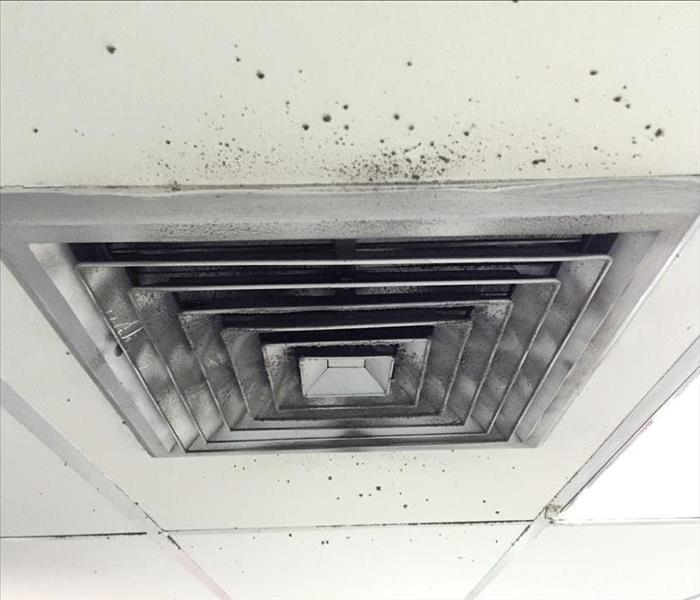 Dust that accumulates in your air ducts can lead to microbial growth
Dust that accumulates in your air ducts can lead to microbial growth
How To Remove Mold From Air Conditioner Ducts
If you believe your building in New Briton, PA, has black mold circulating in the ventilation system, it is important to have the situation assessed as quickly as possible. Left unchecked, mold spores may continue to spread and the problem could get worse. Luckily, by working with a professional mold remediation company, the air inside your building can be restored. There are several steps to take if you suspect mold.
1. Look for Clues
There are clues to look for that can signify a mold problem. If you notice a musky smell or experience allergy-like symptoms while inside, it could indicate that mold is circulating within your air ducts. You can also check the walls near vents for a black substance. If it is mold, it will not easily wipe away.
2. Inspect the Area
If you found any of the warning signs of black mold, you should have the area assessed by a certified mold inspector. They have the tools and skills necessary to check the inside of the ductwork. If mold is found, they will determine the extent of the problem by checking inside insulation and other materials.
3. Clean and Disinfect
Clean ducts may require that the mold spores be eradicated. Special killing agents and disinfectants will likely be applied as part of this process.
4. Remove the Source of the Problem
The source of the problem must be identified and removed. If left unchecked, more mold spores may be released, which could cause the mold to get back into the ventilation system.
Returning your business to normal after identifying a black mold problem involves more than just cleaning the areas you can see. It could be circulating within the vents and spreading spores throughout the building. By working with a professional mold remediation service, you can benefit from their expertise and special equipment that can rid your building of its mold problem.
Preparing Your Company Property for a Storm
12/23/2019 (Permalink)
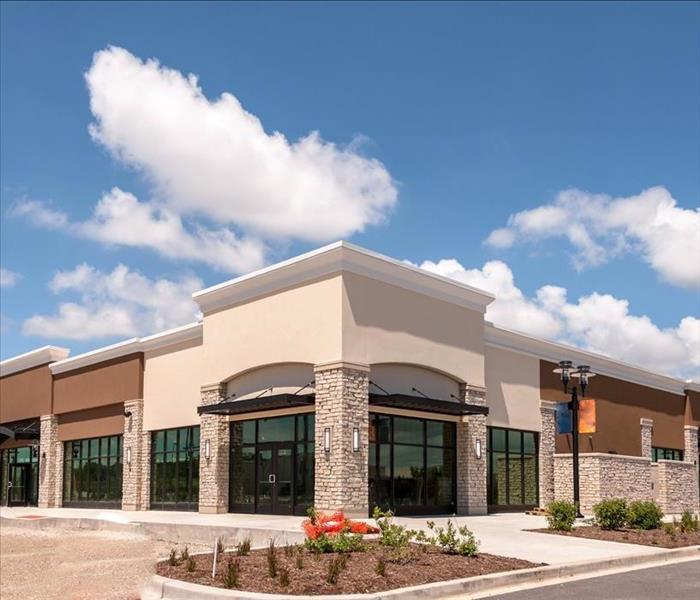 Building in Chalfont, PA
Building in Chalfont, PA
Preparing Your Company Property for a Storm
Owning a business in Chalfont, PA means you may have to deal with the possibility of storm damage resulting in the need for exterior maintenance on the property. Fortunately, preparing for the inclement weather beforehand may help you avoid costly damages. Here are a few tips you may want to consider.
1. Know the Weather
Knowing the weather in your area is one of the first steps to protecting your company property. If you’re aware a storm may be coming, you can begin making preparations beforehand. This will allow you the time you may need to make a building inspection, as well as perform any repair jobs that may be required.
2. Inspect the Property
Inspecting the property should be a regular part of your company's exterior maintenance routine. This way, if you know there is a potential for certain types of problems, you can stay up-to-date on the building's upkeep. Keep an eye out for overhanging tree branches, clogged gutters, cracks in any siding, and weathering on the roof. It may be helpful to make a list of any problems you find so that they can be handled quickly before a storm arrives.
3. Take Mitigation Steps
If the property does suffer storm damage, it’s best to contact a storm damage restoration service. However, keeping the building maintained may help you avoid worse damage. During the inspection, take note of any repairs that may be needed, and have these done as soon as possible. This may include cleaning gutters to prevent water back-flow, trimming dead branches so that they don’t fall, and fixing any windows that may leak. If you don’t have time to make repairs before a storm, consider tarping or boarding over the affected area to prevent further damage.
Keeping up with your company building’s exterior maintenance may also help you stay ahead of the storm. Stay aware of any approaching storms, look over the property before the storm arrives, and make any repairs you may need quickly. Remember, if the company building does suffer storm damage, a restoration professional may be able to help.
Ultrasonic Cleaning!
1/8/2019 (Permalink)
How does the cleaning work?
It's all about bubbles!! According to Morantz, "These bubbles are created by sound waves as those waves move more water. This is known as Cavitation." Cavitation is the formation of bubbles in water.
With the Cavitation process, the bubbles collapse which happens a million times per second (AKA A LOT). This heat & pressure is what gives the machines such cleaning power.
What can you clean?
The beauty of Ultrasonic Cleaning is how much we can actually clean! Examples of what we can clean lists as follows:
- Content Restoration (stuffed animals, toys, knickknacks, mold remediation)
- Medical Cleaning & Infection Control (trays, bed frames, keyboards, surgical equipment)
- Electronics (computers, tvs, telephones)
- Parts (automotive parts)
- Janitorial & Maintenance (chandeliers, oriental rugs)
We want to make sure your belongings are properly taken care of, so we want to make your time of stress as painless as possible. It's as easy as letting your Lead Crew Chief know you want items cleaned!
If you want anything cleaned, call us at (215)-348-7755!
Content By:https://www.google.com/search?q=Morantz,+These+bubbles+are+created+by+sound+waves+as+those+waves+move+more+water.+This+is+known+as+Cavitation.+Cavitation+is+the+formation+of+bubbles+in+water.&source=lnms&tbm=isch&sa=X&ved=0ahUKEwiwh5Kg8t7fAhWBTd8KHUFABegQ_AUIECgD&biw=1831&bih=909





 24/7 Emergency Service
24/7 Emergency Service




















